Myths about teaching can hold you back
- Year 3
Estimate then measure mass and volume and record in a table
I can estimate and then measure mass and volume and record in a table.
- Year 3
Estimate then measure mass and volume and record in a table
I can estimate and then measure mass and volume and record in a table.
These resources will be removed by end of Summer Term 2025.
Switch to our new teaching resources now - designed by teachers and leading subject experts, and tested in classrooms.
These resources were created for remote use during the pandemic and are not designed for classroom teaching.
Lesson details
Key learning points
- Estimating is important. If we estimate accurately, it helps us check if our actual measurements are accurate.
- We can record our measurements in a table, which is a presentation of information so data can be interpreted easily.
Keywords
Estimate - An estimate is a given value, number or quantity that is near to the true amount; it is a number close enough to the right answer.
Table - A table is data (a collection of numbers, words, measurements and descriptions of things) arranged in rows and columns.
Common misconception
Children may estimate incorrectly or confuse where to record their measurements in the table.
When estimating, hold an item of known mass in one hand and the unknown in the other - compare them. Take care when reading table headings.
To help you plan your year 3 maths lesson on: Estimate then measure mass and volume and record in a table, download all teaching resources for free and adapt to suit your pupils' needs...
To help you plan your year 3 maths lesson on: Estimate then measure mass and volume and record in a table, download all teaching resources for free and adapt to suit your pupils' needs.
The starter quiz will activate and check your pupils' prior knowledge, with versions available both with and without answers in PDF format.
We use learning cycles to break down learning into key concepts or ideas linked to the learning outcome. Each learning cycle features explanations with checks for understanding and practice tasks with feedback. All of this is found in our slide decks, ready for you to download and edit. The practice tasks are also available as printable worksheets and some lessons have additional materials with extra material you might need for teaching the lesson.
The assessment exit quiz will test your pupils' understanding of the key learning points.
Our video is a tool for planning, showing how other teachers might teach the lesson, offering helpful tips, modelled explanations and inspiration for your own delivery in the classroom. Plus, you can set it as homework or revision for pupils and keep their learning on track by sharing an online pupil version of this lesson.
Explore more key stage 2 maths lessons from the Measures: mass and capacity unit, dive into the full primary maths curriculum, or learn more about lesson planning.

Licence
Prior knowledge starter quiz
6 Questions
Q1.Look at these objects. Which is heavier?
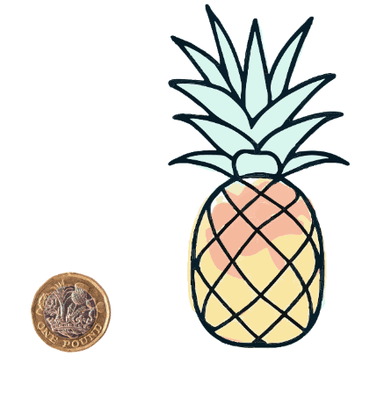
Q2.These containers are full to capacity. Starting with the smallest, put the containers in order of the volume of liquid that they contain.
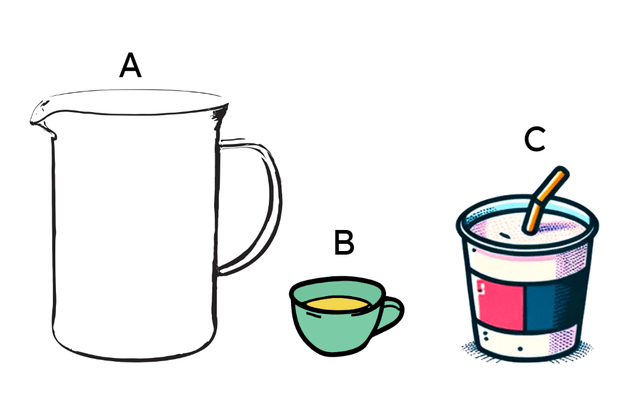
Q3.What is the mass of this bowl of cereal?
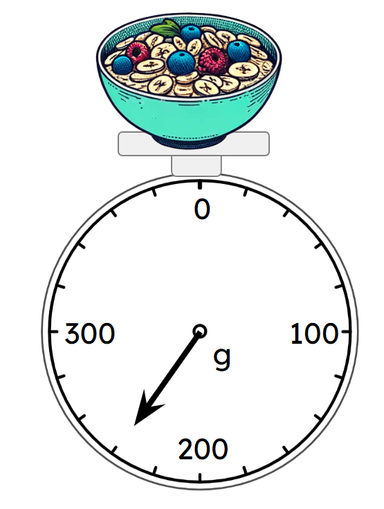
Q4.This jug was filled to its capacity. Some liquid was spilt. How much liquid was spilt?

Q5.Look at this table of data. What is the last animal in the column with the title 'Pet'?
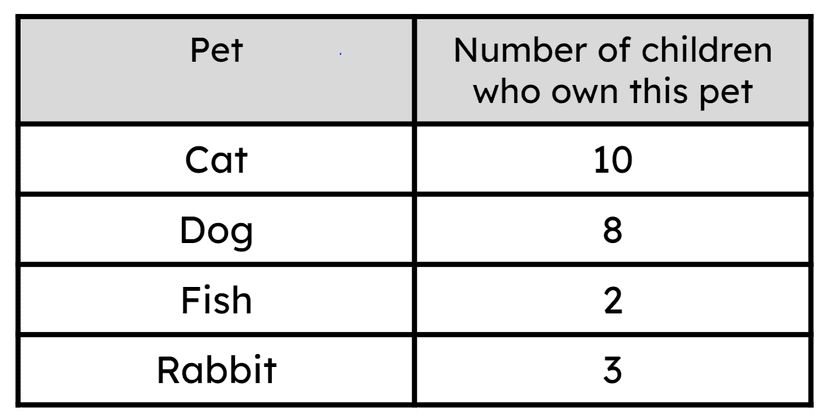
Q6.Look at this same table of data. Look along the row for 'Fish'. How many children own fish?

Assessment exit quiz
6 Questions
Q1.Look at this table. Which object has the greatest mass?
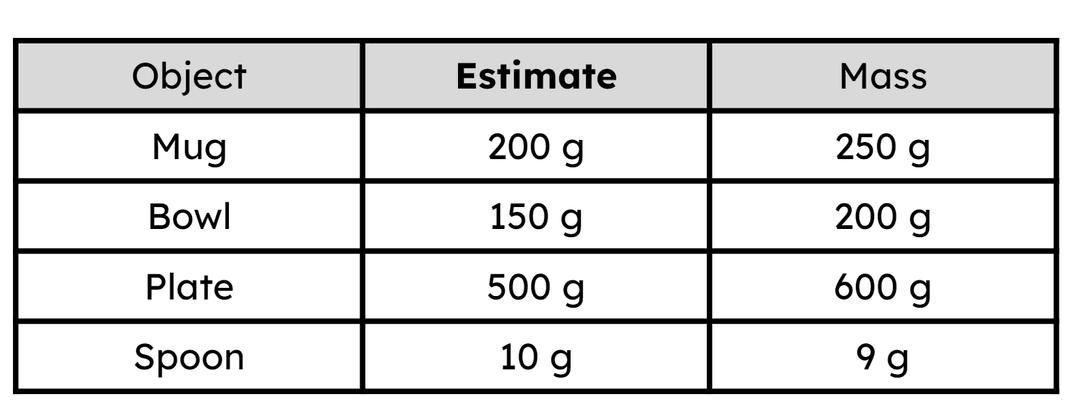
Q2.Look at this table. What is the estimated mass of the spoon?

Q3.Look at this table. Starting with the object with the smallest actual mass, put the objects in order of mass.

Q4.By comparing the mass to objects of known mass, Jacob estimates the mass of a pair of sunglasses to be 20 g. Sophia estimates them to have a mass of 90 g. Whose estimate was more accurate?
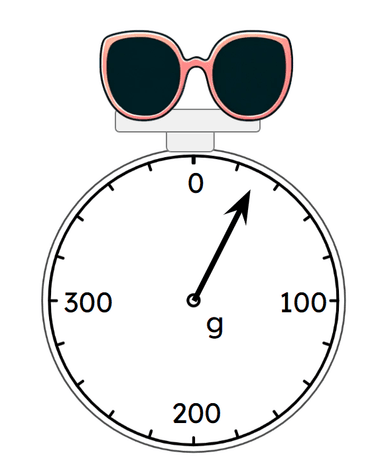
Q5.Look at this table showing the estimated and actual volume of water in some containers. What is the total volume of water in the cup and the kettle?
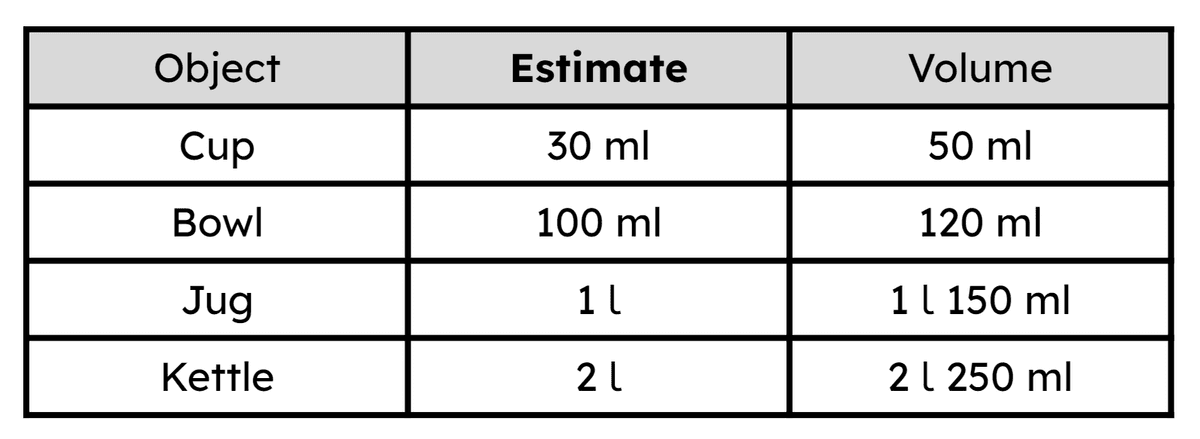
Q6.Look at this table. What is the difference in volume between the estimate and actual volume of the jug?



